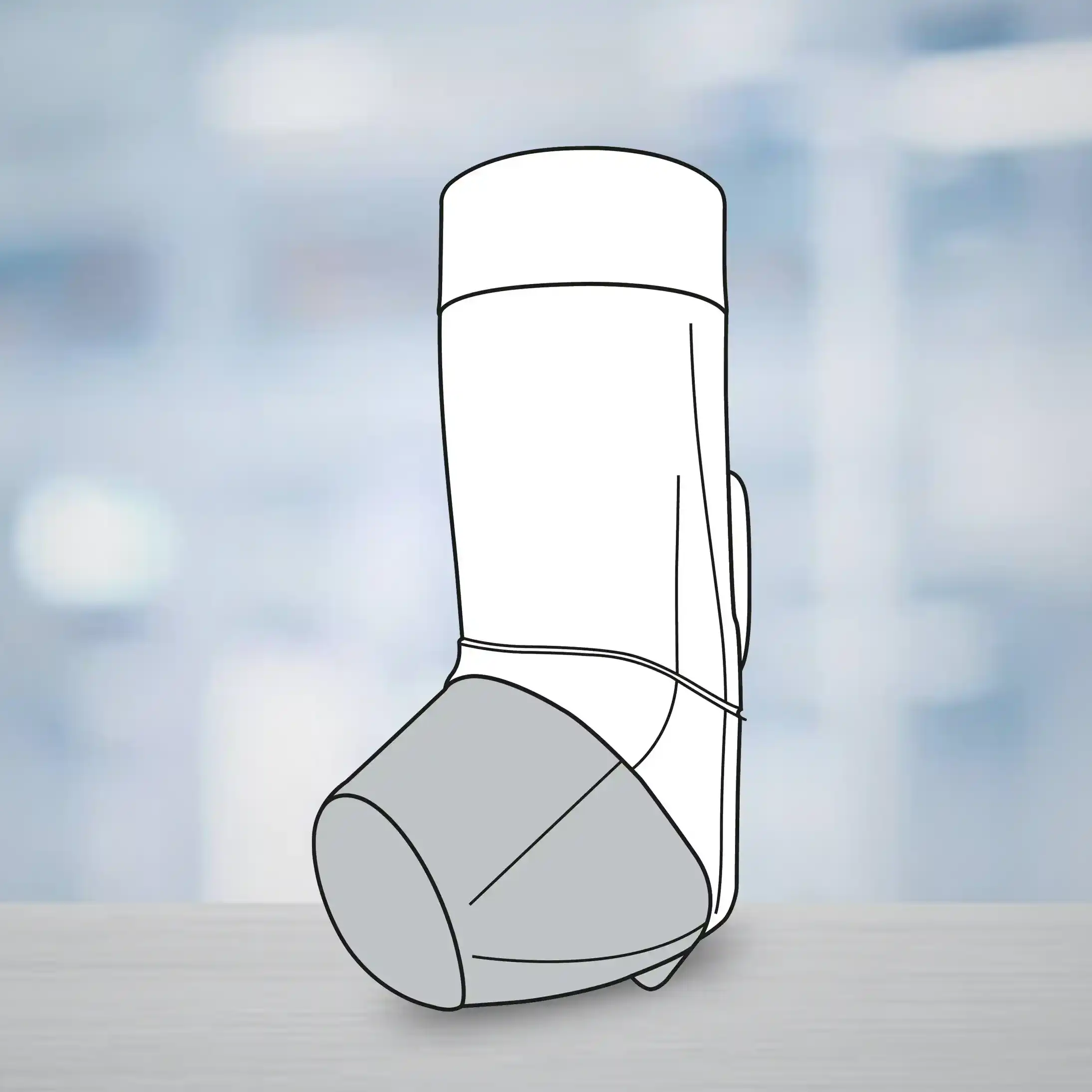Complicated Urinary Tract Infections: Current Management Challenges & Need to Look Beyond
Key Messages:
- Antimicrobial resistance is one of the top global public health threats.
- Complicated urinary tract infections (cUTIs) are the most common bacterial infections in the community and healthcare settings. Escherichia coli and Klebsiella pneumoniae are the common causative uropathogens.
- The mortality associated with Carbapenem-resistant Enterobacterales (CRE) infections is high (20% to 54.3%), which further underscores the need for newer treatment options.
- Currently, aminoglycosides, beta-lactams, beta-lactamase inhibitors, or carbapenems are recommended for the treatment of urinary tract infection (UTI) caused by extended-spectrum beta-lactamase (ESBL)-producing gram-negative organisms.
Antibiotic Resistance - Global and Indian Brunt:
Antimicrobial resistance (AMR) is a significant global health concern in the twenty-first century. The spread of drug-resistant pathogens substantially threatens human health, and growing evidence shows that AMR is also a major health problem in India. (1) Bacterial AMR is estimated to have caused or contributed to 49.5 lakh deaths worldwide and is directly responsible for 12.7 lakh deaths, according to the World Health Organization (WHO) data. (2) In 2019, of the 10.7 lakh deaths linked to AMR in India, approximately 3 lakh deaths are directly caused by AMR. (3) The projections by the Organization for Economic Cooperation and Development (OECD) indicate an anticipated twofold surge in resistance to last-resort antibiotics by 2035, underscoring the urgent need for robust antimicrobial stewardship practices and enhanced surveillance coverage worldwide. (2) In India, Escherichia coli, Klebsiella pneumoniae, are common uropathogens responsible for complicated urinary tract infections (cUTIs) and pyelonephritis and are associated with a higher number of AMR deaths. (3)
Complicated Urinary Tract Infections (cUTIs):
cUTIs are common bacterial infections in the community and healthcare settings (4). They are usually associated with a higher risk of recurrence, progression, or more unfavorable outcomes than uncomplicated UTIs. (5) The mean duration of hospital stay among cUTI is 9.1 ± 2.7 days among Indians, with frequent need for intensive care. Diabetes is one of the common risk factors for cUTI, which is highly pervasive in India (6) Most cUTI is caused by Enterobacteriaceae (commonly Escherichia coli, which accounted for 49.6%) (5,7), followed by Klebsiella pneumoniae and Enterococcus spp.). (8)
Current Management of Urinary Tract Infections (UTIs)
The Indian Society of Critical Care Medicine (ISCCM) Guideline for Antibiotic Prescription in Intensive Care Unit recommended antibiotics that cover ESBL (extended-spectrum beta-lactamase) producing gram-negative organisms, include aminoglycosides, beta-lactam and beta-lactamase inhibitors or carbapenems (Level of Recommendation 2A), as the initial choice of antibiotics to treat UTIs in the ICU settings. (9)
The ICMR (Indian Council of Medical Research) Treatment Guidelines for Antimicrobials Use in Common Syndromes 2022 suggested Piperacillin–tazobactam, Ertapenem, Imipenem, Meropenem and Amikacin as an empirical treatment in treating infective urinary syndromes such as acute pyelonephritis. The guideline further noted that local antimicrobial resistance patterns should be the basis for empiric treatment. Antibiotics should be changed based on susceptibility results as soon as they are available. (10)
High Resistance to Current Anti-infectives Agents
Resistance to anti-infective drugs is an urgent public health problem threatening the treatment and control of infectious diseases. (11) The ICMR 2022 Annual Report for AMR Surveillance Network, emphasised that among hospital-acquired infections, Gram-negative bacteria (GNB) accounted for 74.4% of all Blood Stream Infection (BSI) cases. Among cUTIs, GNB accounted for 57.7% of cases, and Klebsiella spp. (30.4%) was the most common GNB involved. A high rate of resistance was seen against third-generation cephalosporins, carbapenems, fluoroquinolones, colistin, and aminoglycosides in Klebsiella pneumoniae, E. coli and Acinetobacter baumannii and Pseudomonas aeruginosa causing UTIs; nearly 60% isolates of Enterococcus faecium were vancomycin-resistant. (12) The mortality associated with Carbapenem-resistant Enterobacterales (CREs) infections, including bacteremia, may be as high as 20% to 54.3%, further underscoring the need for newer antimicrobial treatment options. (13)
Need for Novel Treatment Options for cUTIs
AMR among gram-negative pathogens, specifically MDR Enterobacterales, is a major public health concern. There is rising CRE prevalence, especially among Enterobacterales which limits antibiotic options available in India for treating cUTI. The higher prevalence of PBP3 insert amongst E. coli and rising colistin resistance further limit the treatment options. Thus, there is an urgent need for an antibiotic that has activity against MDR, carbapenem and colistin-resistant pathogens causing cUTI. (14)
Plazomicin a US-FDA approved (2018) molecule for treatment of cUTI and acute pyelonephritis in adult patients by susceptible microorganism(s): E. coli, K. pneumoniae, P. mirabilis, and E. cloacae. By virtue of its distinct structure, Plazomicin retains its activity against CRE [MBL, Oxa-48, KPC] (17), ESBL-producing, colistin-resistant (18), aminoglycoside-resistant Enterobacteriaceae and against most AME (aminoglycoside modifying enzymes) producing Enterobacteriaceae (19). Plazomicin will provide a new option for the treatment of cUTI and pyelonephritis in Indian patients and could meet an unmet demand in the era of AMR for managing cUTI patients in Indian clinical settings. (20)
References:
- Vijay Pal Singh, Diksha Jha, Bilal Ur Rehman, Virendra S. Dhayal, Mahesh Shanker Dhar, Nitin Sharma. A mini-review on the burden of antimicrobial resistance and its regulation across one health sectors in India. Journal of Agriculture and Food Research. 2024. doi.org/10.1016/j.jafr.2024.100973.
- World Health Organisation. Antimicrobial Resistance. Retrieved on 15 April 2024 from https://www.who.int/news-room/fact-sheets/detail/antimicrobial-resistance
- IHME. University of Washington. The burden of antimicrobial resistance (AMR) in India. Retrieved on 13th April 2024 from https://www.healthdata.org/sites/default/files/files/Projects/GRAM/India_0.pdf
- Lodise TP, Manjelievskaia J, Marchlewicz EH, Rodriguez M. Retrospective Cohort Study of the 12-Month Epidemiology, Treatment Patterns, Outcomes, and Health Care Costs Among Adult Patients With Complicated Urinary Tract Infections. Open Forum Infect Dis. 2022 Jun 20;9(7):ofac307. doi: 10.1093/ofid/ofac307. PMID: 35891695; PMCID: PMC9308450.
- Hung KC, Tsai WW, Hsu CW, Lai CC, Tang HJ, Chen IW. Clinical efficacy and safety of novel antibiotics for complicated urinary tract infection: A systematic review and meta-analysis of randomized controlled trials. Int J Antimicrob Agents. 2023 Jul;62(1):106830. doi: 10.1016/j.ijantimicag.2023.106830. Epub 2023 Apr 24. PMID: 37100354.
- Jindal J, Meelu A, Kaur S, Chahal HS, Makkar V, Garg V. Clinical Profile and Outcome in Patients of Complicated Urinary Tract Infections: A Single-Center Prospective Observational Study. Int J Appl Basic Med Res. 2022 Jul-Sep;12(3):167-170. doi: 10.4103/ijabmr.ijabmr_50_22. Epub 2022 Jul 26. PMID: 36131855; PMCID: PMC9484510.
- M. A. A. Faraz, S. Mendem *, M. V. Swamy and P. Shubham. PREVALENCE OF URINARY TRACT INFECTIONS AND RELATED ANTI-MICROBIAL RESISTANCE IN INDIA: A SYSTEMATIC REVIEW AND META-ANALYSIS. 2021. IJPSR DOI: 10.13040/IJPSR.0975-8232.12(8).4314-21
- NIKHAT, S. R., J. KAREEM, A. LATEEF, S. R. FATIMA, and R. SULTANA. “A PROSPECTIVE OBSERVATIONAL STUDY ON PREVALENCE AND TREATMENT OF URINARY TRACT INFECTIONS IN A TERTIARY CARE TEACHING HOSPITAL IN TELANGANA STATE”. International Journal of Pharmacy and Pharmaceutical Sciences, vol. 14, no. 12, Dec. 2022, pp. 1-5, doi:10.22159/ijpps.2022v14i12.46191.
- Khilnani GC, Zirpe K, Hadda V, Mehta Y, Madan K, Kulkarni A, Mohan A, Dixit S, Guleria R, Bhattacharya P. Guidelines for Antibiotic Prescription in Intensive Care Unit. Indian Journal of Critical Care Medicine 2019;23(Suppl 1): S1-S63.
- Treatment Guidelines for Antimicrobial Use in Common Syndromes 2022 New Delhi, India. Retrieved on 13 April 2024 from https://main.icmr.nic.in/sites/default/files/upload_documents/treatment_amr_2022.pdf
- Heymann DL. Resistance to anti-infective drugs and the threat to public health. Cell. 2006 Feb 24;124(4):671-5. doi: 10.1016/j.cell.2006.02.009. PMID: 16497576.
- Indian Council of Medical Research. Annual Report. Antimicrobial Resistance Research and Surveillance Network. 2022. Retrieved on 25 April 2024 from https://main.icmr.nic.in/sites/default/files/guidelines/AMRSN_Annual_Report_2022.pdf
- Portsmouth S, Bass A, Echols R, Tillotson G. Heterogeneity of Recent Phase 3 Complicated Urinary Tract Infection Clinical Trials. Open Forum Infect Dis. 2021 Feb 2;8(3):ofab045. doi: 10.1093/ofid/ofab045. PMID: 33738315; PMCID: PMC7953653.
- Karishetti, Mallikarjun S.; Shaik, Hussain Basha. Clinicomicrobial assessment of urinary tract infections in a tertiary care hospital. Indian Journal of Health Sciences and Biomedical Research (KLEU) 12(1):p 69-74, Jan–Apr 2019. | DOI: 10.4103/kleuhsj.kleuhsj_296_17
- Bilinskaya A, Linder KE, Kuti JL. Plazomicin: an intravenous aminoglycoside antibacterial for the treatment of complicated urinary tract infections. Expert Rev Anti Infect Ther. 2020 Aug;18(8):705-720. doi: 10.1080/14787210.2020.1759419
- Zollner-Schwetz I, König E. Treatment options for multidrug-resistant Gram-negatives in urinary tract infections. Curr Opin Urol. 2023 May 1;33(3):173-179. doi: 10.1097/MOU.0000000000001084. Epub 2023 Mar 2. PMID: 36861769.
- Serio AW, Keepers T, Krause KM. Plazomicin Is Active Against Metallo-β-Lactamase-Producing Enterobacteriaceae. Open Forum Infect Dis. 2019 Mar 12;6(4):ofz123. doi: 10.1093/ofid/ofz123. PMID: 30968059; PMCID: PMC6446133.
- Denervaud-Tendon V, Poirel L, Connolly LE, Krause KM, Nordmann P. Plazomicin activity against polymyxin-resistant Enterobacteriaceae, including MCR-1-producing isolates. J Antimicrob Chemother. 2017 Oct 1;72(10):2787-2791. doi: 10.1093/jac/dkx239. PMID: 29091226.
- Karishetti, Mallikarjun S.; Shaik, Hussain Basha. Clinicomicrobial assessment of urinary tract infections in a tertiary care hospital. Indian Journal of Health Sciences and Biomedical Research (KLEU) 12(1):p 69-74, Jan–Apr 2019. | DOI: 10.4103/kleuhsj.kleuhsj_296_17
- Clark JA, Burgess DS. Plazomicin: a new aminoglycoside in the fight against antimicrobial resistance. Ther Adv Infect Dis. 2020 Sep 4;7:2049936120952604. doi: 10.1177/2049936120952604. PMID: 32953108; PMCID: PMC7475792.

.svg?iar=0&updated=20230109065058&hash=B8F025B8AA9A24E727DBB30EAED272C8)








